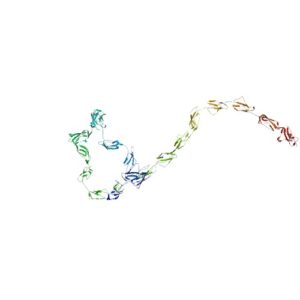aHUS patients raised the question “ are the predisposing genetic factors of aHUS fully catalogued?” as a topic of research which matters to them in their Global Research Agenda.
Those affected by aHUS know well that it is imperfections in components of the Complement System that made them susceptible to the disease when one of many “triggering hits” over their lives caused a catastrophic onset of aHUS.
They know that there are different imperfections in different aHUS patients, some not yet found. But how many and who is keeping a record of what to look for as an aHUS “susceptibility imperfection” , or “mutation” or “significant variant”.
At University College London, the Department of Structural and Molecular Biology has been collating variants in the Complement System for 15 years and creating a database of information about them. It is known as the Database of Complement Gene Variants and can seen online , click here.
Designed for use by scientist and clinicians the information held is very detailed and fully referenced using a scientific narrative that is mostly incomprehensible to the lay reader. Its scope is all complement variants found but categorised by whether the variant has been found to be linked to a disease and which disease that is.
Depending on which component of Complement has an abnormally and which part of that component has a mutation a Complement mediated disease may result. The UCL database has recorded variants for Age related Macular Degeneration (AMD), C3 Glomerulopathy (C3G) Thrombotic Microangiopathy (TMA ) as well as aHUS. There are 882 recorded variants in total, each of them referenced by a published article.
There are variants for C3, CD46, CFB, CFH , CFHR1 , CFHR3, CFHR4, CHFR5, CFI, CFP, DGKE, and THBD. There are also some in the PLG part of the coagulation pathway.
There is a simple,as well as , an advanced search facility for researchers to find a specific variant and to learn about its significance along with other information discovered about it , including the source published article by the discoverer of the variant.
There are drill down buttons which take the researcher through each disease and each Complement component down to a specific variant with its detailed DNA Sequence and images of the structures.
There are also drill down facilities into the statistical analysis about the data.
For aHUS there are 542 variants catalogued at present. Each found from 1231 aHUS patients cases( so some are related )distributed over Complement components as follows:
Component No %
CFH 216 39.8
CFI 88 16.2
CD46. 81 14.9
C3 79 14.5
DKGE 21 3.8
CFB 21 3.8
THBD 15 2.7
PLG 7 1.2
CFHR5 6 1.1
CFHR1 4 0.7
CFP 2 0.3
CFHR3 2 O.3
As would be expected CFH has the highest number of recorded variants. The top four components together account for 85% of all reported variants.
Other statistics reveal that though 87% of patients have only one variant but 13% have up to four.
For each of the components there is further drill down into types , effects, domains and location of each mutation.
In the case of CFH most are point type variants ( a single change in the DNA sequence) with a missence effects ( not working properly ) in the domain (bit ) of CFH known as short consensus repeat 20 located in its exon ( part of the gene in DNA which made it).
It is possible for the reader to drill down to the specific mutations. Enter “both” for the source option and then the Complement component of interest e.g. “CFH” and a list of all specific variants can be seen. For each of variants there is information about what is known about it.
The database is massive, but the website provides so much more including a comprehensive list of publications related to the research and discovery of each mutation. Similarly there is a large collection of images of the Complement components ( the featured image is of CFH).
It is well of data for those interested in aHUS to draw from to improve knowledge and use for the benefit of patients.

Featured image is of CFH UCL (c)

